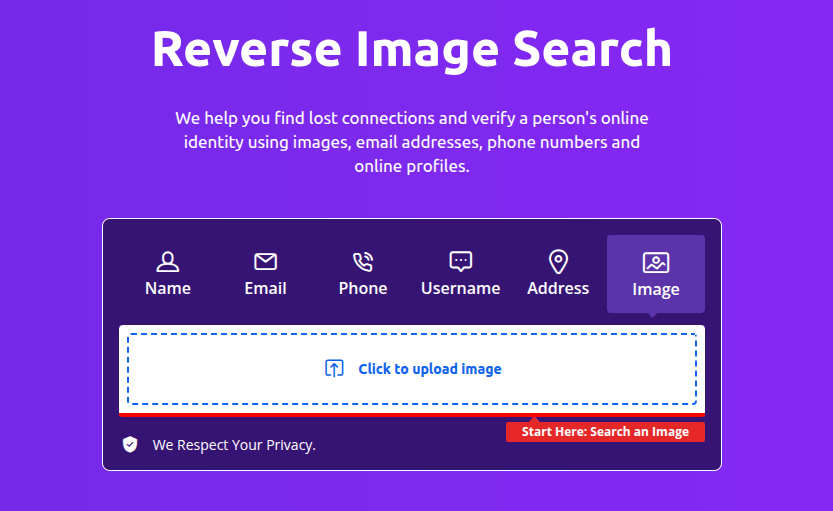Online scams are becoming more sophisticated every day, and fake profiles are at the center of many of them.
Whether it’s on dating apps, social media, or messaging platforms, scammers use stolen images, fake identities, and AI-generated content to trick people.
Knowing how to spot fake profiles and protect yourself is essential to stay safe online.
Photo by Sander Sammy on Unsplash
Jane’s story
Jane, a young woman from New York, spent countless hours on Tinder. Like many of us, she was searching for someone special to share her life with.
One day, she came across Jake’s profile. He had a charming smile and claimed to be a soldier on a mission far away.
Their conversations quickly became exciting. Jake was polite, intelligent, and seemed to understand her perfectly. Maria started to believe she had found “the one.”
But just a few weeks later, the red flags appeared. The man who once spoke only about love suddenly began asking for money.
Jane’s story is not unique. It’s just one of the millions of cases happening every day online. This is the dark side of dating apps — scams disguised as love stories. Fake profiles are everywhere, and with new technology, they are more dangerous than ever.
Deepfake Trends and Fake Profile Statistics for 2025
It seems that the internet is becoming harder to trust. Fake profiles, altered photos, and even full deepfake videos are spreading faster than ever. (Deepfake technology is an AI method that creates hyper-realistic fake videos, images, or audio, blurring the line between truth and deception online).
What used to be rare is now part of daily online life, making it difficult to know who’s real and who’s not.
Here are the latest trends and statistics you should take seriously for 2025.
- Rapid Growth of Deepfakes: Around 8 million deepfakes are expected to circulate online in 2025, up from roughly 500,000 in 2023.
- Ubiquitous Content: A European Parliament analysis estimates that by 2026, up to 90% of all online content could be synthetic due to deepfakes spreading across social media, messaging, and video-sharing platforms.
- Fake Accounts Are Common: A University of Portsmouth study found that 80% of people have seen suspicious or fake social media accounts.
- Difficulty in Detection: Over half of professionals report low confidence in spotting fake accounts.
- Anonymity and Deception: A study in Armenia highlighted that 35% of users prefer anonymity, with 24% of men and 11% of women admitting to posting false information online. Many more alter their appearance to look more attractive.
- Other researches shows that 27% of dating app users have encountered a scam, and nearly 1 in 10 profiles may be fake.
- Even more worrying, 58% of victims say it all started with what looked like an innocent online conversation.
Further reading:
- European Parliament (EPRS report): Children and deepfakes
- University of Portsmouth: Research reveals how fake social media accounts could be the cause of serious security breaches
- MDPI: “Virtual Masks” and Online Identity: The Use of Fake Profiles in Armenian Social Media Communication
- Keepnet: Deepfake Statistics & Trends 2025: Growth, Risks, and Future Insights
How AI Makes Fake Profiles More Dangerous
In the past, creating a fake profile was a time-consuming process. They had to find photos, write a bio, and invent stories.
Today, Artificial Intelligence (AI) has made this process faster and easier. This helps scammers be more effective than ever.
Here’s how:
- Scammers can create completely realistic photos of non-existent people using technologies like Generative Adversarial Networks (GANs). These images look very real, but you cannot find them with a simple reverse image search. They have never been used anywhere else.
- AI allows the creation of thousands of fake accounts at once. These “bots” can send mass messages and build convincing stories, interacting with users in ways that seem completely human.
- With AI, scammers can analyze your profile, identify your interests, and create a personalized story that touches you emotionally. This dramatically increases the chances of the scam’s success.
- Deepfake technology can create fake videos or recordings. These can mimic the voice or image of real people, including friends or family. This makes scams even more dangerous, especially when money is requested urgently and in a believable way.
Red Flags to Spot Fake Profiles
There are various signs that should make you suspicious when you frequently communicate with someone online and have not met them in person recently. If you notice any of the following, it is best to immediately check if they are really who they claim to be.
What are these signs:
- Asks for money or gifts early: They pressure you for financial help or expensive presents shortly after you connect.
- Looks too good to be true: Their profile photos are flawless, like something from a magazine or a stock photo site.
- Moves too fast: They rush to create a strong emotional bond or talk about a future together almost immediately.
- Inconsistent stories: Details about their life, job, or past don’t match up.
- Vague online presence: They have little to no professional identity or their social media profiles are new, private, or have few friends/followers.
- Sudden emergencies: They invent an urgent crisis, often requiring money for a medical emergency, travel, or legal fees.
- Few or fake connections: Their social media profiles have a small number of followers or all their friends seem to be new, generic, or private accounts.
- Unusual deepfake content: Their photos or videos look subtly off or unnatural.
- Contacts you on multiple platforms: They unexpectedly reach out on a second platform, like WhatsApp or Instagram, after you’ve already connected somewhere else.
How to Protect Yourself
When it comes to fake profiles and online scams, the biggest challenge is finding the truth behind the screen. Someone may claim to be a soldier, a doctor, or a successful entrepreneur — but how can you be sure?
To this point I would like to mention that the post contains some affiliate links that may earn me a commission. For more information, please read the disclaimer.
This is where online identity search tools (or people search finders) can help you discover whether the people you meet on the internet are really who they say they are. Through specialized searches of images, emails, phone numbers, addresses, and usernames, you can identify fake profiles and protect yourself from online scams.

Such tools include SocialCatfish, PimEyes, Spokeo, SearchPeopleFree, and others, which provide their services either for free or paid.
More specifically, you can use the following tools that SocialCatfish provides:
- Reverse Image Search: If you’re talking to someone and want to know if their photos are real, run an image search. You’ll see if the same picture appears on other sites, social networks, or dating apps. This way, you can quickly discover if they’re using stolen images.
- Reverse Email Search
: Do you only have an email address? That’s enough. SocialCatfish can show you if there’s a real account behind it, the person’s name, and even which platforms they use.
- Reverse Address Lookup: If someone gives you an address to prove who they are, you can check it. This will tell you if they actually live there or if it’s a lie.
- Reverse Phone Number Lookup: Getting suspicious calls or messages? With just a phone number, you can see if it’s registered to a real person.
- Verify a Person’s Identity: Want to be sure someone is who they claim? SocialCatfish cross-checks details and helps you see if the profile is authentic or made for deception.
- Reverse Username Search (Find Multiple Profiles)
: Most people reuse the same username across different platforms. With this tool, you can find all accounts linked to the same username and check if their stories match reality.
The Role of VPNs in Security
Spotting a fake profile is one thing. Protecting your own data is another.
Scammers often use fake accounts not just to chat, but to gather information, track your activity, or even adjust their lies based on where you live. A VPN (Virtual Private Network) makes these tricks much harder.
A VPN works like a secure tunnel between you and the internet. It hides your real IP address, disguises your location, and encrypts everything you send or receive. That way, even if someone tries to monitor your activity, what they see is just scrambled data.
This is especially useful when dealing with fake profiles:
- Someone sends you a link, hoping to grab your IP and figure out your location. With a VPN, they hit a dead end.
- A scammer tailors their story depending on where you live. If your location is masked, their script suddenly doesn’t fit.
- You connect to public Wi-Fi at a café or hotel, and a fake “friend” pushes you toward a login page. VPN encryption blocks them from stealing your credentials.
Reliable VPN solutions like
- Safeshell VPN,
- Surfshark VPN,
- or NordVPN -which is considered one of the most powerful tools in its category
offer affordable and strong protection.
Of course, a VPN alone isn’t a magic solution. It’s most effective when paired with smart habits. For example, always look for red flags in profiles, avoid clicking on suspicious links, and don’t overshare personal details like your city or workplace. Adding two-factor authentication to your accounts also gives you an extra safety net if a password ever leaks.
Remember, always BE SUSPICIOUS!
A VPN won’t stop scammers from contacting you, but it will strip away the easy ways they collect data about you. Combined with cautious behavior, it makes you a much harder target for fake profiles and online scams.
Online scams are no longer the exception; they are an everyday reality.
Fake profiles are becoming more realistic with the help of AI, and victims are increasing every year.
With the right mix of awareness, identity-checking tools, and VPNs, you can stay safe online and enjoy your time more.


